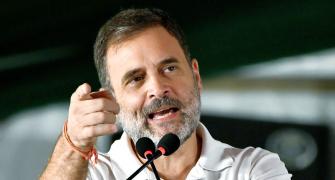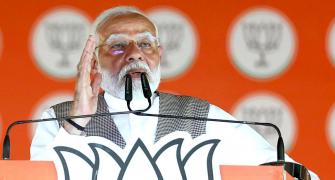Technology has made it possible for us to replicate the experience of a theatre in a living room.
Yes, we are talking about home theatres here. Says Ratish Pandey, general manager, Bose Corporation (India), "We're not competing with the big screen, but the video and audio qualities in a top of the line home theatre system is extremely good."
"A home theatre system is basically a combination of audio and visual hardware. It includes five speakers, a sub woofer, an audio-visual receiver (which, for most systems also acts as an amplifier) and a DVD player. The visual component (as in a TV set) is not included. While the front left and right speakers carry the background score, the central speaker is for dialogues. The two surround speakers are to give you the special sound effects and the sub-woofer is for low frequency sound," explains Shailendra Raghuvanshi of Cinebels, The Jamo Shop, Delhi.
So, if you're thinking of buying a home theatre system, what should you be looking at? First, keep your room size in mind.
If you're living in an apartment then it's no use buying a powerful system that would send your neighbours complaining to the police.
If you have your room specifications, then the shop assistants can help you decide on what is the most suitable for you. Jamo, for instance, has two broad divisions -- one for rooms that are 250 sq ft or less and the other for rooms that are 250 sq ft plus.
Says Pandey, "For normal city apartment rooms a system that has an output of 90-95 decibels is more than sufficient."
According to Pandey, another criterion that one has to take into consideration while buying a home theatre system is the furniture in the room.
A system for glass and steel room will be different from one that has thick draperies, carpet, upholstered chairs and other furniture.
"The performance of a home theatre system also depends on where you place the speakers," says Pandey.
To help ordinary customers, Bose has developed a software called ADAPTiq, which ensures a great sound. The system comes with a pair of microphones and a calibration disc. Customers can use the disc to find the best sound in the room.
Both Bose and Jamo are high-end products. While a basic home theatre system at Jamo's costs around Rs 85,000 the top-end ones are in the region of Rs 800,000.
At Bose the range is from Rs 99,900 to Rs 2,09,900. Then there is the cost of either the plasma television set (at Rs 4,75,000 for a Fujitsu one) or an overhead projector (starting at Rs 500,000).
"Don't buy a projector," says Pandey, "unless you have a room that is a dedicated music room. You have to make sure that no outside light comes in."
There are a lot of products that are less expensive, such as the one from Samsung that comes at a price of Rs 36,000.
There are at least two on offer from Onkyo -- the premium L-MS50, which comes for about Rs 53,000, and the L-DR7, which is around Rs 38500. Philips' MX5700D costs about Rs 35,000, while the Panasonic DK20 costs about Rs 40,000.
There are customers who prefer to buy various elements from different companies. "Do it if you're a pro," suggests Pandey. "But if you just want to have a good time listening to music or watching a film then buy the components from a single manufacturer. If you have a put together system and if there is a problem, then you'll have trouble locating it and getting it repaired," he goes on to add.
There is actually nothing called an ideal sound. The thumb rule is to buy a system that will deliver a sound quality you like.






